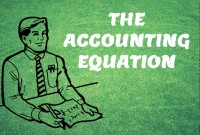- Home
- Business Processes
- Industry Knowledge
- Aerospace Industry
- Automotive Industry
- Banking Domain
- BFSI Industry
- Consumer/ FMCG Industry
- Chemicals Industry
- Engineering & Construction
- Energy Industry
- Education Domain
- Finance Domain
- Hospitality Domain
- Healthcare Industry
- Insurance Domain
- Retail Industry
- Travel and Tourism Domain
- Telecom Industry
- Leadership Skills
- eLearning
- Home
- Functional
- General Ledger (Record to Report)
- Defining Internal Structures
Defining Internal Structures
Internally, an organization can be structured in many different ways, depending on their objectives. The internal structure of an organization will determine the modes in which it operates and performs. Organizational structure allows the expressed allocation of responsibilities for different functions and processes to different entities such as the branch, department, workgroup and individual.
Internally, an organization can be structured in many different ways, depending on their objectives. The internal structure of an organization will determine the modes in which it operates and performs. Organizational structure allows the expressed allocation of responsibilities for different functions and processes to different entities such as the branch, department, workgroup and individual.
We know that big multinational organizations operate in a matrix environment, constitute of many units and need different views of their operating and financial results. These different views may represent financials or profitability by geographies, countries, locations, businesses, segments, product lines, cost centers, functions, COE’s etc.
Various types of operational units, functional units and divisional units widely used across industry are briefly explained below:
|
Dimension |
Explanation |
|
Cost centers |
A cost center is part of an organization that does not produce direct profit and adds to the cost of running a company. Examples of cost centers include marketing & finance departments. It is an operating unit in which managers are accountable for budgeted and actual expenditures. Used for the management and operational control of business processes that may span legal entities. |
|
Business units/ Management Entity |
A semi-autonomous operating unit that is created to meet strategic business objectives. Used for financial reporting that is based on industries or product lines that the organization serves independently of legal entities. |
|
Value streams |
An operating unit that controls one or more production flows. Commonly used in lean manufacturing to control the activities and flows that is required to supply a product or service to consumers. |
|
Business Functions/ Departments / Divisions |
A department or division can be viewed as the intersection between a legal entity and a business unit. Departments can serve as profit centers. They can be used as cost accumulators and for revenue recognition. They may have profit and loss responsibility, and may consist of a group of cost centers. This operating unit defines academic areas, research units, or administrative offices with an appointed manager, that have programmatic, operational, fiscal and/or budgetary responsibility for a specific set of activities and projects/grants. |
|
Retail channels |
An operating unit that represents a brick and mortar store, an online store or an online marketplace. Used for the management and operational control of one or more stores within or across legal entities. |
|
Business Support Functions |
An operating unit that represents a category or functional part of an organization that performs a specific task to support inward-directed activity, such as sales or marketing to support business. Used to report on functional areas. A support function may have allocated budgets and may consist of a group of cost centers. |
|
Organization Support Functions |
Self-directed activity systems of an organization concerned with establishing and maintaining the organization as an entity. Each organization support function provides support to all functions, business, business support and other organization support functions. For example, corporate finance, IT functions, administration and knowledge management. An organization support function may have allocated budgets and may consist of a group of cost centers. |
|
Profit Center |
A profit center is a part of a corporation that directly adds to its profit, treated as a separate business and for which the profits or losses are calculated separately. This operating unit is held accountable for both revenues, and costs (expenses), and therefore, profits. Different profit centers are separated for accounting purposes so that the management can measure their relative efficiency and profit. |
|
Business Locations/ Countries/ Geography/ Supplier & Customer Locations |
Organizations operate from more than one location and may need to track where a particular financial transaction occurred. Some examples of need to track different locations could be transactions through sales offices, factories, subsidiaries etc. Organizations may even need to analyze the financial information based on the supplier’s or customer’s location may require a location segment dedicated to this. However this has very limited application in terms of usefulness. E.g. software companies cater to clients from all over the world & may like to make strategies based on which customer territory contributed how much to the revenue & hence a customer location is an important segment but for a manufacturing organization this will hold no relevance. |
|
Project Area
|
Certain organizations have their business models build around project activities. E.g. a property developer may like to have all its cost & revenue against individual projects. These organizations may have multiple projects running under same legal entity. There projects have their own budget & statutory requirements & hence their own trial balance. |
|
Product Lines/Service Lines
|
Some organizations deal in products which are low in volume but high in value. These organizations would like to analyze their costs & revenue for individual products. They also need to apportion indirect costs & revenues to these products/services so that the financials provide a full picture on product performance. On the other hand, a supermarket dealing in thousands of product might not have any interest in recording every transaction against the individual product or track financials at product level. Further each legal entity in the group may have its own set of released products that it wants to include in transaction documents. |
|
Accounts/Sub Accounts
|
Natural Accounts captures the nature of financial transactions such as Assets, Liabilities, Fund Equity, Revenues, and Expenditures. It captures the transactional information at detailed level that can be summarized to parent accounts for external and internal company-wide reporting. This hierarchy is helpful in organizing and summarizing reports. |
|
Business Employee Hierarchy |
Business employee hierarchy is the pyramidal type arrangement of the organizational employees. This vertical hierarchy helps in delegation of authority based on the span of control at multiple levels of employees. Each level in the hierarchy becomes an integral part of the chain of command and acts as the channel for transmission of authority to the succeeding lower level of the management. These hierarchical structures in organizations narrow down as we move in the upward direction and showcase centralization in the whole setup. At transactional level it is used to define the authority and set approval path and limits. |
|
Elimination Entity |
When a parent company does business with one or more subsidiary companies and uses consolidated financial reporting, any transactions between the companies must be removed, or eliminated, from the financial reports. These transactions are called elimination transactions. The destination company for eliminations is called the elimination company. |
|
Consolidation Entity |
A legal entity which is the consolidation company. During consolidation, transactions from several company accounts of subsidiaries is aggregated into a single company |
Related Links
You May Also Like
-
In this article we will help you understand the double-entry accounting system and state the accounting equation and define each element of the equation. Then we will describe and illustrate how business transactions can be recorded in terms of the resulting change in the elements of the accounting equation.
-
Learn the typical accounting cycle that takes place in an automated accounting system. We will understand the perquisites for commencing the accounting cycle and the series of steps required to record transactions and convert them into financial reports. This accounting cycle is the standard repetitive process that is undertaken to record and report accounting.
-
Accrued expenses, sometimes referred to as accrued liabilities, are expenses that have been incurred but have not been recorded in the accounts. Discuss the need to record accrued liabilities and why they require an adjustment entry. Understand the treatment for these entries once the accounting period is closed and learn to differentiate when the commitments become liabilities.
-
GL - Recurring Journal Entries
A “Recurring Journal” is a journal that needs to be repeated and processed periodically. Recurring Entries are business transactions that are repeated regularly, such as fixed rent or insurance to be paid every month. Learn the various methods that can be used to generate recurring journals. See some examples and explore the generic process to create recurring journals in any automated system.
-
A legal entity is an artificial person having separate legal standing in the eyes of law. A Legal entity represents a legal company for which you prepare fiscal or tax reports. A legal entity is any company or organization that has legal rights and responsibilities, including tax filings.
-
Defining Organizational Hierarchies
A hierarchy is an ordered series of related objects. You can relate hierarchy with “pyramid” - where each step of the pyramid is subordinate to the one above it. One can use drill up or down to perform multi-dimensional analysis with a hierarchy. Multi-dimensional analysis uses dimension objects organized in a meaningful order and allows users to observe data from various viewpoints.
-
In some of the ERP tools, there are more than 12 accounting periods in a financial year. This article discusses the concept of accounting calendar and accounting periods. Learn why different companies have different accounting periods. Understand some of the commonly used periods across different organizations and the definition & use of an adjustment period.
-
McKinsey 7S Framework is most often used as an organizational analysis tool to assess and monitor changes in the internal situation of an organization. The model is based on the theory that, for an organization to perform well, seven elements need to be aligned and mutually reinforcing.
-
A subsidiary is a company that is completely or partly owned by another corporation that owns more than half of the subsidiary's stock, and which normally acts as a holding corporation which at least partly or wholly controls the activities and policies of the daughter corporation.
-
In this article, we explain some commonly used subsidiary ledgers like accounts receivable subsidiary ledger, accounts payable subsidiary ledger or creditors' subsidiary ledger, inventory subsidiary ledger, fixed assets subsidiary ledger, projects subsidiary ledger, work in progress subsidiary ledger, and cash receipts or payments subsidiary ledger.
Explore Our Free Training Articles or
Sign Up to Start With Our eLearning Courses

About Us
Learning
© 2023 TechnoFunc, All Rights Reserved











